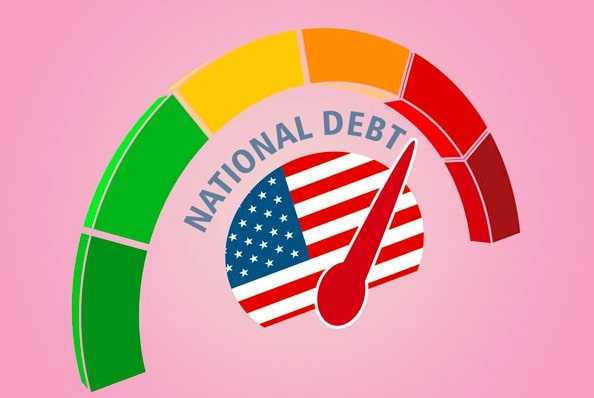America’s national debt continues its upwards climb

Image: Shutterstock
If America’s finances were a renowned architectural structure, they would be the Leaning Tower of Pisa – because Uncle Sam is slowly losing the ability to balance his checkbook.
The US national debt has eclipsed $35 trillion for the first time, according to Treasury Department data published this week, with the US government’s red ink accumulating more quickly than previous projections.
Analysts point to several factors behind the recent larger-than-expected increase to America’s national debt:
- Elevated interest rates over the past year-plus have made it harder for the US government to manage its debt burden.
- Some federal programs created during the pandemic have been more costly than projected due to fraud and abuse.
- Demand for tax credits included in the 2022 Inflation Reduction Act has been higher than expected, adding to annual US deficits.
America’s rising national debt has also led to record-high interest costs. For the first time in recorded history, the US government is spending more money on interest payments associated with its national debt than both defense and Medicare, according to Treasury Department data published in May.
Looking ahead… Starting next year, America’s interest payments on the national debt ($951 billion) will be larger as a share of US GDP than any time since records began in 1940, per the nonpartisan Congressional Budget Office.
The future doesn’t look any brighter:
- America’s national debt is projected to jump from $35 trillion currently to ~$57 trillion by 2034, with interest costs nearly doubling over that period to reach $1.7 trillion/year.
- By 2053, interest payments are projected to reach $5.4 trillion/year – which would make it the single largest line item in the federal budget (surpassing Social Security, Medicare, Medicaid, etc). For context, the overall federal budget was $6.1 trillion in 2023.
📊 Flash poll: In your opinion, how should the US government deal with its rising national debt and associated interest payments?
See a 360° view of what media pundits are saying →

Sprinkles from the Left
- Some commentators argue that if leaders in both parties were interested in getting the nation on a more sustainable path, it actually wouldn’t be too painful to address America’s national debt problem – which makes its continued existence so utterly maddening.
- Others contend that America’s national debt is less scary than the large figure would indicate, and that making the US debt sustainable wouldn’t be at all hard in terms of the straight economics.
- “The $100,000 debt problem facing every American” –WaPo Editorial Board
- “Why You Shouldn’t Obsess About the National Debt” –Paul Krugman, NY Times
- “A national debt crisis is coming, politicians need to recognize the urgency” –Jim Martin, Denver Post

Sprinkles from the Right
- Some commentators argue that America’s rising national debt is largely because entitlement spending is growing at a pace that is fiscally unsustainable, rather than the misguided argument that Americans aren’t paying their fair share in taxes.
- Others contend that US politicians should listen to the Congressional Budget Office’s consistent warnings about America’s rising national debt, which could eventually cause investors to lose faith and lead to unstoppable inflation, unemployment, and a sluggish economy.
- “Soaring U.S. Debt Is a Spending Problem” –WSJ Editorial Board
- “Why are so few talking about a mounting national debt?” –Jay Evensen, Deseret News
- “National debt continues to explode. Does anyone care?” –Orange County Register Editorial Board
Share this!
Recent Discussion stories


Discussion
| July 26, 2024The Summer Olympics are here
🏟️ The Summer Olympic Games kick off later today with the opening ceremony in Paris.

Discussion
| July 24, 2024The largest US basic income study showcases its pros and cons
💰 A project backed by OpenAI’s Sam Altman published the largest-ever US study on “basic income,” or no-strings-attached payments typically aimed at lower-income Americans.
You've made it this far...
Let's make our relationship official, no 💍 or elaborate proposal required. Learn and stay entertained, for free.👇
All of our news is 100% free and you can unsubscribe anytime; the quiz takes ~10 seconds to complete